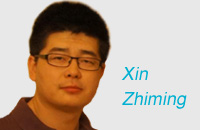World needs G3 for better co-op among top three economies: Dominique de Villepin
By Wu Zheyu and Nie Ligao (chinadaily.com.cn) Updated: 2016-04-13 08:23What suggestions would you offer to foster co-financing among relative parties for the global infrastructure connectivity alliance initiative?
I think the most important challenge is to use all the different institutions to create synergy and share expertise, the former ones like the World Bank, the IMF as well as the new ones like Asian Infrastructure Investment Bank, like the New Development Bank, in order to achieve a fairer and more multilateral cooperation. There should be a very coherent strategy between the different institutions to push forward the capacity of financial economic community to build up new projects. The growth of the world is lacking of some new innovative project. We need to have initiative of this kind, which is going to be, of course, strong impulse for better growth. There is a need to increase cooperation between private and public financial actors from different countries to develop platforms of co-financing.
How can they attract more private capital and social capital for the initiative? And also, if it’s appropriate, could you introduce the experience and operation situation of PPP (Public-Private-Partnership) in European countries that China could learn from?
The key of PPP is to achieve the best cooperation between private and public capital as well as between public and private expertise. We have seen it growing recently, especially in France, and we should now take the lessons from the promising experiences of this tool. Public capital is needed in order to give the first input and private capital is needed as well. We are in a time of huge liquidities but without being able to direct them towards the real economy, towards the best projects and towards the best possible services for the population. It is all about creating a secure environment for investors and to build up confidence for all the actors.
The project of Dagong today, which is a new methodology for infrastructure, will create more trust through a better assessment of the risk. Because there’s more guarantee that money we have would have good return. So now we have to change the situation in creating trust, by the stronger involvement of countries, and by supporting big projects like One Belt and One Road which are going to show that when we choose carefully about the project, we may have a high return on investment, and of course with support of financial institutions.
How do policymakers in France value the AIIB’s prospect and future?
France is highly committed to the success of the One Belt One Road initiative. Indeed, France has been one of the first countries to join the AIIB and has always been involved in multilateral institutions promoting dialogue and stability.
I believe that AIIB has a very important position and responsibility. AIIB, has attracted a high number of members: more than 50 countries have decided to take part in the Bank. Chairman Jin Liqun has done really a great job in giving credibility to this bank. AIIB is setting very high standards promoting a project management that is lean, clean and green as Chairman Ji Liqun puts it.
So I really think that this bank, which is in the process of selecting some projects, as we see in right now, in India, Pakistan and some other countries, will be able to build up its credibility through ambitious projects and sustainable methods.
Structural reform has been a heated issue in this year’s G20 Summit. Currently western countries are also facing with a series of structural problems. Could you introduce the latest situation and progress that has been achieved by European countries?
Structural reforms are key to tackle the challenges of the changes in globalization that have appeared since the crisis of 2008. We need to find a sustainable path for public debts and deficits and to define new motors for growth. We need to help the economy invest, innovate, create jobs. For this, it is necessary to modernize and adapt institutions. In Europe, we have still a lot of work to do to find a right balance between, on the one hand, the necessity of controlling debts and deficits and, on the other hand, the need to stimulate the economy in a time of rising risks where we face the threat of a deflationist spiral.
As you pointed out in a previous speech at this year’s Boao Forum, China and Europe both need pay attention to some bottlenecks when changing the mode of growth. What factors would you pay special attention to through China’s structural reform? How should China achieve balance between economic growth and the process of reform?
China is going through a major historical transition, from an export-driven manufacturing model to a model based on domestic-consumption and services economy. It’s a change European countries have had to go through in the 1970’s and 1980’s. And of course it creates difficulties and unbalances that we are witnessing today. But I think we see also positive signs showing that China is on the right track. Services are growing fast and urban equipments are growing. Innovation is booming in airspace, supercalculators, superconductors, genomics. China has a huge asset compared to other economies, in this transition, it has the biggest domestic market in the world. Of course, managing this change will need taking the lessons of what countries in Europe for example have gone through, by accompanying the social impact of the industrial overcapacities in the heavy industry, for example the steel industry, and creating a social safety net. It will mean modernizing the credit system and the capital markets for more efficiency It will mean adapting the SOEs to the world competition. This will also mean gradual and progressive reforms, as has been explained by Prime Minister Li Keqiang in Boao. The new five year plan is a positive sign of the sustainable development path of China.

I’ve lived in China for quite a considerable time including my graduate school years, travelled and worked in a few cities and still choose my destination taking into consideration the density of smog or PM2.5 particulate matter in the region.











